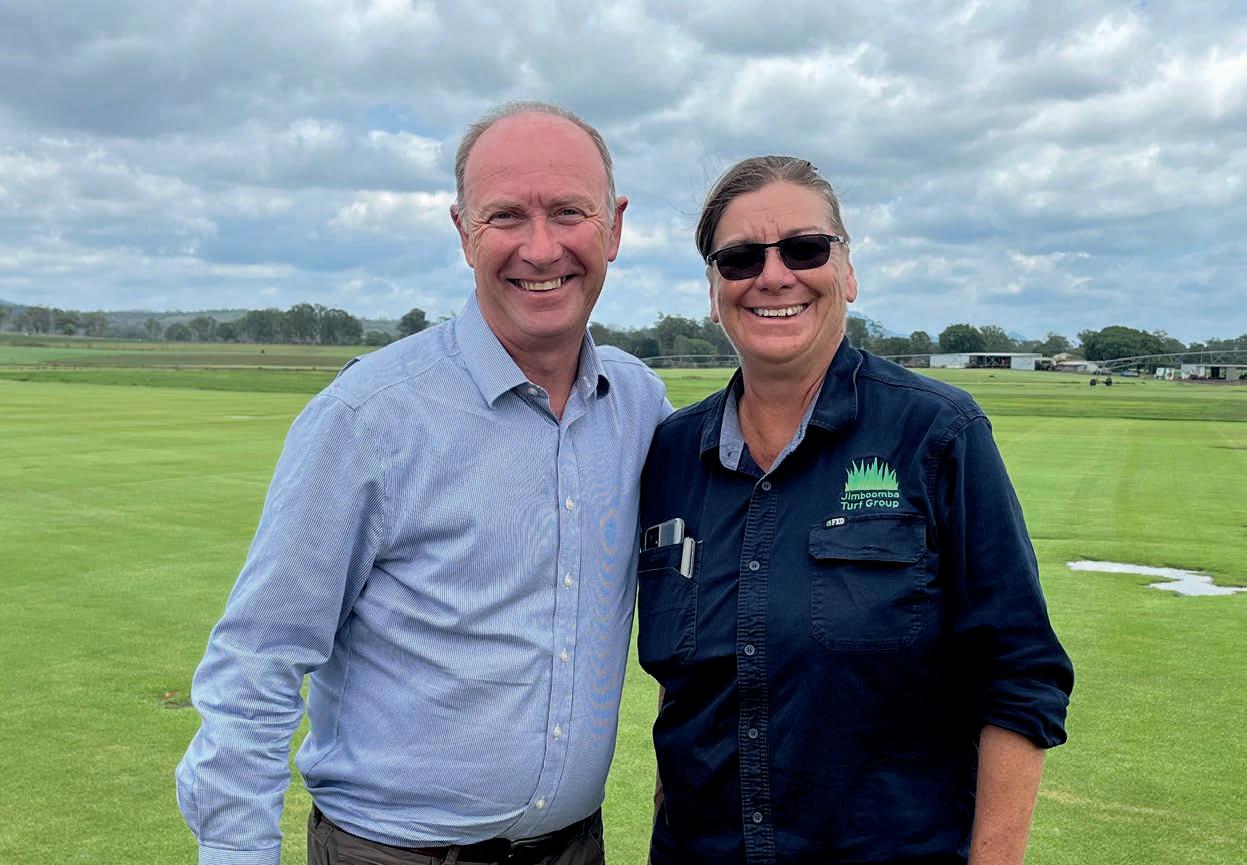
3 minute read
Turf Australia Appoints New CEO
When the call came for Matthew Lunn to join Turf Australia late last year, there was no hesitation in saying yes even though, at the time, he was well embedded into his successful roles as CEO of the Nursery Garden Industry WA and Landscape Industries Association WA in Perth.
Matthew, who originally arrived in Australia in 1994 from the UK, had devoted his entire career to horticulture, having been encouraged by his late father to pursue such a path when he was taken to his first Chelsea Flower Show as a young teenager.
Advertisement
By 18, Matthew began a horticultural apprenticeship at the Royal Horticultural Society’s Garden at Wisley and quickly fell in love with horticulture. It was during this period that, through the RHS, he worked on the Chelsea Flower Show and began to have a keen eye for landscape design and construction.
“Those early days were the real building blocks of my career, and although we always grumble about being put through an apprenticeship, the result allowed me to grow my career outwards, particularly within horticulture; those paths are endless.”
In 1994 Matthew arrived in Perth and was appointed as the Grounds Manager at Curtin University; he held this position for ten years before joining the University of Western Australia in a similar role for three years.
It was here that his first interest in turf began when he managed a variety of passive and recreational turf surfaces and embarked on formal turf management training at TAFE and then at Sydney University under the guidance of Prof Peter Martin.
“Turf has always been a big part of my horticultural DNA, which I suppose has come from my keen interest in sport and regularly attending sporting venues across the UK. My path should have taken me into sports turf management and the presentation of turf in stadiums.
The effort that goes into turf grass surfaces in stadia today is boggling, and it is those turf practitioners that play such a massive role in
CEO
the development of high-profile sports and sportsmen as well as bringing undoubtedly the enjoyment and theatre of visiting such iconic sporting facilities we have today.”
In 2016 Matthew joined the Nursery and Garden Industry WA as their CEO, having run a successful landscape business in Perth. For nearly seven years, he lifted the image of the nursery industry and mainly worked closely with growers on improving advocacy with the state government.
“This career period was critical in helping me in this new role with Turf Australia. Working closely with the NGIWA board and their members and seeing first-hand the importance of assisting growers in being part of a sustainable industry was greatlearning. The continued development of the national accreditation program, the Australian Plant Production Standard, also provided me with a clear insight into the future direction of businesses so that they became more profitable and gained better market access by being an accredited grower.”
By January this year, he joined Turf Australia officially as their national CEO. Since then, he has been busily understanding the association’s relationship with the 240 levypaying turf farms across Australia.


Within his work, he will be closely working with the Turf Australia National Board and President Bec Sellick as they work to forge Turf Australia as the peak industry body for the turf industry.
As well as this, there will be a prominent role in overseeing the turf levy projects in collaboration with Hort Innovation and ensuring the extension work with turf growers through the state associations is mainly delivered and continuing to build broad relationships with the end users within the landscape space.
“Turf Australia has a wealth of history as an association, but in many ways, it is time for it to take another step forward so that it doesn’t either get left behind or, as we have seen with other associations, forced into an amalgamation with another similar industry.

As a peak body, we must not only be seen but have a strong voice in all areas of advocacy that impact this industry. We have vital issues around rising production costs, labour shortages, natural disasters and in some cases, businesses that are not forging ahead with innovative practices to make their farms more financially viable.”
Lunn, therefore, believes Turf Australia has a fundamental role to play in the lives of Australians, with living plants becoming even more critical when considering climate change, with turf always being seen as part of the solution when mitigating heat.
To this end, Turf Australia will continue to work closely with its state associations and help to develop strong branding on the benefits of turf and why alternatives like synthetic grass have considerable environmental negatives.

“When we start looking at synthetic turf, particularly for residential properties, I almost shudder with disbelief. I’m a great believer that in many circumstances, the homeowner has been misinformed about the real benefits of turf, and poorly kept grassed areas are often the perfect advert for not buying natural turf. Our job is to make turf this great living carpet for all levels of gardeners.On top of this, by proactively working with state water authorities, any concerns over water usage should also be negated based on turf’s great benefits, including mitigating the heat island effect in urban areas and human mental health.”
Turf Australia’s future, therefore, looks to be in good hands, and with a national board and President fully committed to building Turf Australia, it appears the turf production industry is in for some exciting times ahead with a clear strategic direction of helping to develop a more sustainable and resilient sector.










